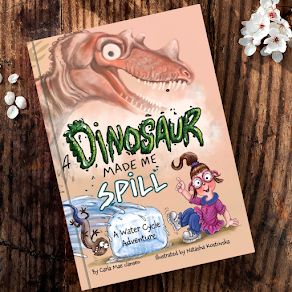Sea animals, beaches, and hydrothermal vents are popular topics around here, so we end up doing an Ocean Theme with science experiment a couple times each year. Today, I'm sharing an awesome science project which allows your kids (and you) to actually see sound waves!
Fun Fact: Whales don't see color!
Sonar is using sound waves to "see" objects under water. It is like echolocation, except that echolocation is in the atmosphere (so bats and some birds use it), and sonar is under water (so whales and dolphins and submarines use it)!
Whales have huge eyes, but they often use sonar to find food, especially when they travel deeper in the Twilight Zone where light is scarce.
Understanding that sound waves bounce off objects and can be used to figure out where those objects are can be a tricky concept for kids, especially because we don't usually see sound waves. BUT, there are ways you can see right where those sound waves hit and how hard they are vibrating! Today I'm sharing a set of experiments you can do to see just that!
Simple Supplies:
* plastic container (I used a coconut flour bucket...you can use anything that a balloon will fit around, but I always have trouble getting balloons to stay put around oatmeal containers...they bend a lot! Plastic containers are often a little stronger.)
* paper towel tube (or PVC pipe...I really wanted to use PVC pipe because it will absorb less sound than cardboard, but I happened to be all out and I didn't want to go to the hardware store for this...and paper towel tubes work great!)
* 12" balloon
* rubberband
* strong scissors
* salt
Easy How To:
1- Check out this picture:
2- To make this device, trim the balloon and stretch it over the rim of your plastic container. Add a rubberband for extra strength. Cut a hole in the side of the container just a little bit smaller than your cardboard tube. Squish the cardboard tube into the hole so it fills all the space. This is a crude tonoscope, or a device that lets you see images created by sound waves.
3- Try these experiments:
A: Sprinkle salt on the top of the balloon and shout "Boo!" through the cardboard tube!
B: Try a variety of noises and see how the salt behaves differently...hums, singing, talking, and sound effects are fun!
C: Try a variety of pitches...does the salt move more with high or low pitch? (Hint: high pitch sounds have higher frequency wavelengths, meaning that the waves are closer together so the salt is getting hit by more sound waves every second than low pitch sounds!)
D: Try a variety of volumes...does the salt change with loud or soft sounds? (Hint: louder sounds have a higher amplitude, or a "bigger" sound wave. Very loud sounds hit your eardrums {similar to the balloon} so hard they can damage it!)
One of my favorite parts of these experiments is that it includes so many senses: sight, hearing, touch (touch the container!), and even your vestibular system!
One of my favorite parts of these experiments is that it includes so many senses: sight, hearing, touch (touch the container!), and even your vestibular system!
How else can you experiment?
I'll be honest: my young kids were so caught up in the experiments they came up with that it was impossible to get them to hold still long enough to take a picture! I had my oldest pose for a couple so you could get an idea of how everything works!
The tonoscope doubles as a pretty awesome drum:
We also discovered you could point the cardboard tube directly at the salt and see it move when the sound waves hit it:
We were motivated to look into sound waves by our book for the LET’S-READ-AND-FIND-OUT SCIENCE® BLOG SERIES! During this series, bloggers are featuring a science book from the LET’S-READ-AND-FIND-OUT SCIENCE® books and an activity that goes with it! This series is fantastic--you could even use it as a science curriculum! You can find the collection of all the blogger's activity ideas at My Joy Filled Life--just click here!
Our featured book is How Deep is the Ocean? (Image below is an Amazon affiliate link:)
One of the pages points out that sperm whales use sonar to find prey deep under the ocean. We wanted to learn more about that, so we spent the morning experimenting with sound waves!
The book is full of cool facts and surprising information...it even has some fun science experiment suggestions for learning more about pressure and measuring the ocean depths!
And if you want more background information about how whale's see, this is a fantastic article!
And if you want more background information about how whale's see, this is a fantastic article!
AND, if you're looking for more ocean themed science project fun, check out our Ocean Theme Collection, How Sharks Float, and Penguin Experiments!
As always,
Happy Educating,
Carla
I may share at any of these parties!

Never miss another post again! Sign up for our weekly updates newsletter and get links to all our posts once a week in your inbox! Sign up here!!




























0 comments:
Post a Comment